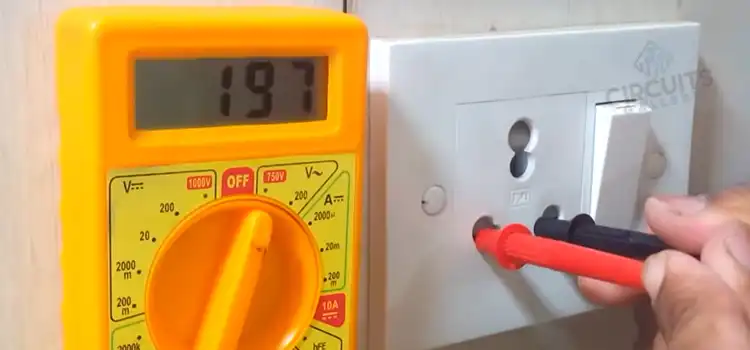What Is the Uncertainty in Voltage Measured by the Multimeter? | The Truth About Multimeter Voltage Uncertainty
Measurement uncertainty is a quantifiable value that defines the range within which the actual measurement lies. This uncertainty may be impacted by a variety of elements when it comes to multimeters, including but not limited to intrinsic instrument error, operator error, and ambient variables.
Understanding this uncertainty becomes essential for accurate and trustworthy data interpretation when it comes to voltage measurements, especially in precision applications like calibration, troubleshooting, and circuit design.
In this article, we’ll look at how accurate multimeter voltage measurements are, and how to calculate the uncertainty and possible multimeter error sources.

How Accurate is a Multimeter Voltage?
How accurately a multimeter measures voltage is determined by how closely the measured value matches the real voltage. Typically, multimeters are made to deliver precise readings within a range that is predetermined by the manufacturer.
The measured voltage, for instance, may differ from the genuine value by up to 0.5% when using a multimeter with an accuracy of, say, 0.5% of the reading.
The selection of the suitable measurement range is a crucial factor affecting the multimeter’s accuracy in measuring voltage. A multimeter often has a number of voltage ranges, including 200mV, 2V, 20V, 200V, and 1000V. For accurate readings, it’s crucial to match the selected range with the anticipated voltage level.
Negative effects may result from choosing a range that greatly exceeds or is below the actual voltage value. A high range might result in a low resolution, which would compromise the reading’s accuracy.
A lower range, on the other hand, can result in an overload scenario, which might harm the multimeter’s internal parts and reduce its accuracy. As a result, range selection is an important factor that affects the overall accuracy of a multimeter’s voltage measurement.
How Do You Find the Uncertainty of a Meter?
A multimeter’s uncertainty must be determined by taking into account a number of things, such as the instrument’s specs and the circumstances surrounding the measurement. The real value of the measured quantity is often assumed to fall within a given range, which is how the uncertainty is typically stated.
The following factors must be taken into account in order to determine a meter’s degree of uncertainty:
- Manufacturer’s specifications: The multimeter’s datasheet, detailing resolution, accuracy, and other features, is crucial in gauging voltage measurement uncertainty.
- Calibration: Regular calibration is essential to maintain multimeter accuracy. The process involves comparing measurements with a reference standard, influencing the overall meter uncertainty.
- Environmental conditions: Measurement accuracy can be affected by environmental factors like temperature, humidity, and electromagnetic interference. Using the multimeter within its environmental constraints can help mitigate these influences.
What Are the Errors Due to Uncertainty When Using a Multimeter?
Despite their accuracy and precision, multimeters are susceptible to certain errors that can affect the reliability of the measured voltage. Some common sources of errors include:
- Input impedance: Multimeters with finite input impedance draw a small current, causing a voltage drop and potential inaccuracies. Using a high input impedance multimeter can mitigate this.
- Noise and interference: Electrical noise from surrounding sources can distort the signal and cause errors. Shielding the multimeter and ensuring a stable electrical environment can help reduce these issues.
- Probing errors: Improper probe connection can introduce errors. Ensuring excellent contact and avoiding additional resistance or short circuits are key to accurate measurements.
- Drift: Multimeters can experience drift, where values change over time due to temperature variations or aging components. Regular calibration and reliable reference sources can help control drift errors.
Uncertainty in Voltage Measurement While Using a Multimeter Outside Its Specified Range?
Yes, using a multimeter outside its specified range can significantly affect the measurement uncertainty.
When a multimeter’s maximum range is exceeded by the voltage being measured (for example, while monitoring a 250V circuit with a 200V range setting), an overload condition may result. This can result in inaccurate measurements or possibly harm to the equipment.
On the other hand, if a range much lower than the anticipated voltage is chosen (for example, selecting a 20V range for a 50V circuit), the measurement’s accuracy may suffer. In particular, this can result in a considerable loss of measurement resolution and reduced accuracy of the measurements.
For instance, utilizing a multimeter in the 1000V range may result in a resolution reduction to 1V if the multimeter has a 0.1V resolution in the 200V range. This implies that readings may be inaccurate by up to 1V rather than only 0.1V.
Selecting the appropriate range that corresponds to the predicted voltage level is crucial for ensuring accurate readings within the set uncertainty limits.
Conclusion
The accuracy of multimeters controls the measurement uncertainty for voltage. We can estimate the largest possible inaccuracy in voltage measurements by taking into account the multimeter’s restrictions and specifications.
Subscribe to our newsletter
& plug into
the world of circuits